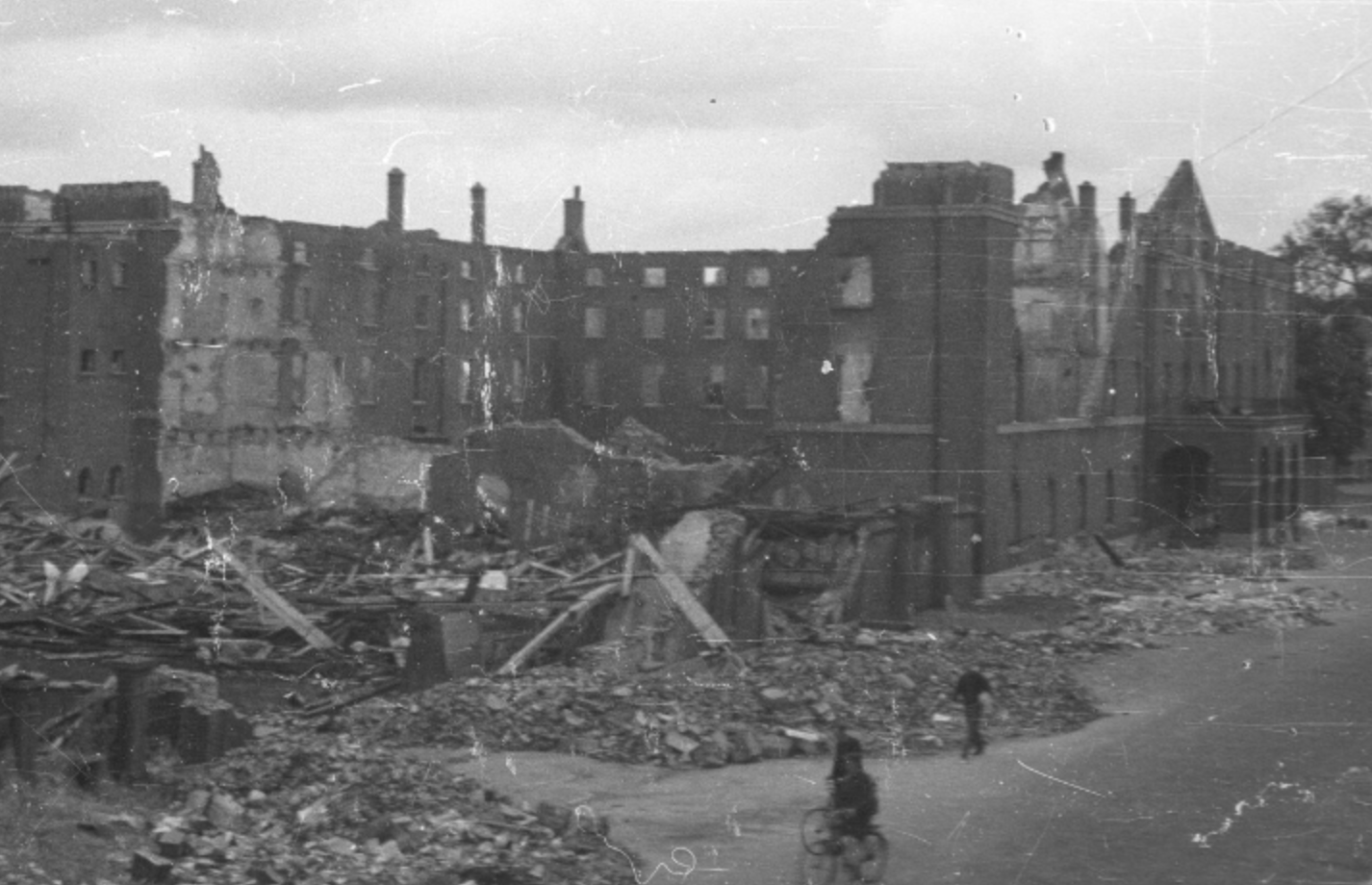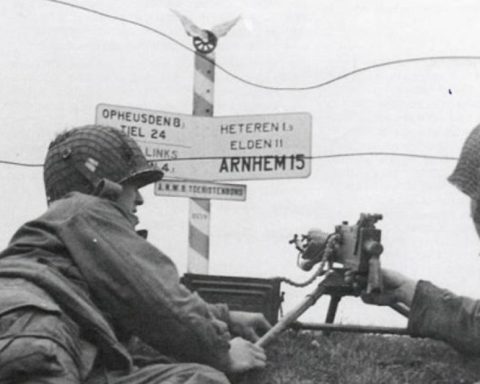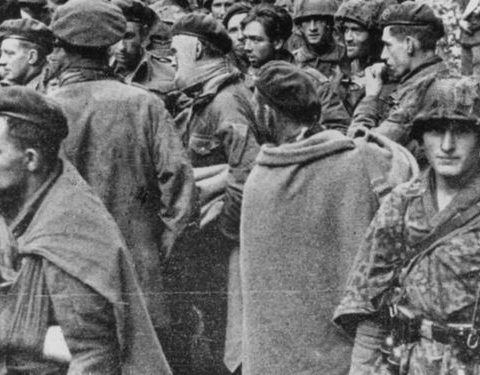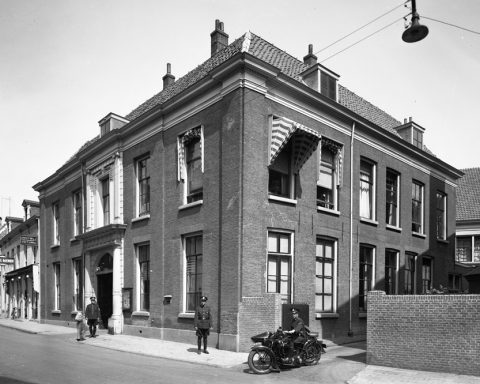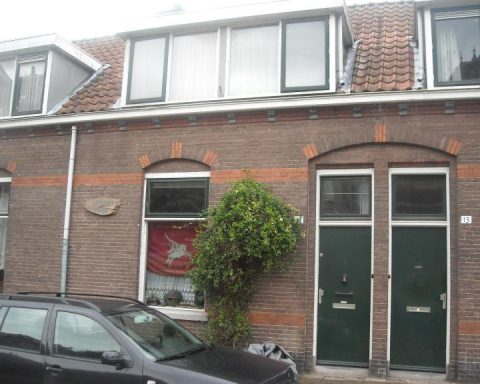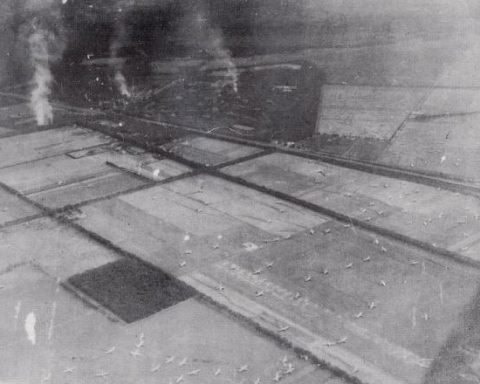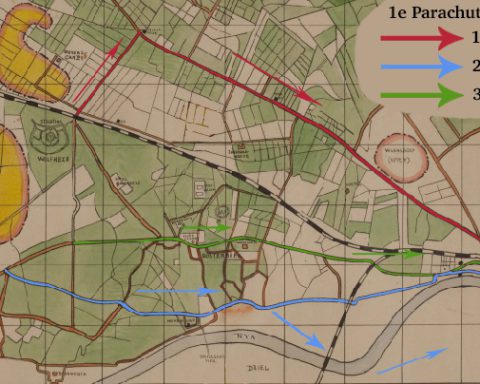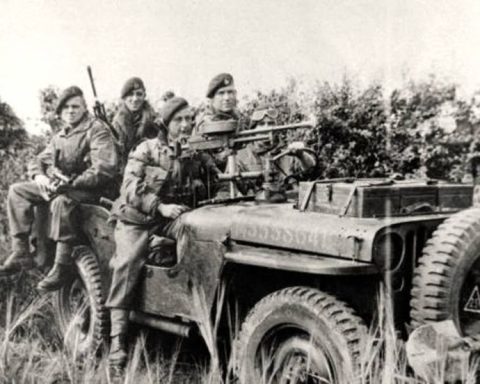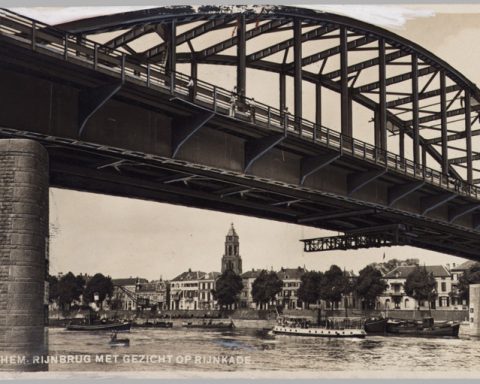The air raid siren in Arnhem had already gone off several times in the morning of Sunday, September 17, but each time it had been a false alarm. But from a quarter to eleven it was a hit. Dozens of military targets in Arnhem and the surrounding area were hit by Allied bombers until approximately 1 p.m.
For two hours in Arnhem, targets that could hinder the British when the paratroopers landed later that day were systematically eliminated with the necessary precision bombing. The German anti-aircraft guns in particular had a hard time.
The slow-flying transport planes with the paratroopers and the wooden gliders were easy prey for the German Flak guns and so the Royal Air Force did everything in their power to destroy as many of the German anti-aircraft guns as possible that morning.
Other German targets in the city were also bombarded. The Willemskazerne on Willemsplein was hit by several bombs and caught fire. The nearby Royal catering industry also burned down completely. The Menno van Coehoorn barracks in Klarendal also received a few direct hits.

In the Bloemstraat, in the Spijkerkwartier, bombs fall on the Van Zijll garage. The garage was confiscated by the Germans as a vehicle repair workshop.
Perhaps that was the reason to bomb the garage. It could also be that the bombs were a miss and should actually have hit a different target. Ten people die in Bloemstraat. Bombs also fell on other targets around the city center of Arnhem.
At the request of General Urquhart, several targets are bombed in Wolfheze, near the landing areas. A German ammunition warehouse explodes and the nearby asylum also receives several hits, causing many casualties.
A few hours later, a number of the psychiatric patients walk in a daze across the British landing grounds.
Nijmegen
Arnhem and the surrounding area were not the only place where the Allies sent bombers. Ede, Kleve and Nijmegen are also bombarded by British and American bombers.
The bombers that appear over Nijmegen cause panic. The city was hit in February 1944 by the so-called ‘mistake bombing’, when American bombers thought they were flying over a German city and dropped their bombs. More than 800 civilians were killed in the mistaken bombing.
This time, as in other places, the bombs are intended exclusively for military targets: barracks, anti-aircraft guns and known German positions.
A number of the bombs that fall in Nijmegen hit the power station, causing a (temporary) power outage in the entire Arnhem and Nijmegen area.
Highest state of alert
Because the Allies have remained where they are at the border between the Netherlands and Belgium since early September, the Germans rightly suspect that the British and Americans are working behind the scenes on a large-scale Allied offensive. The Germans are already expecting that offensive in mid-September.
The large-scale Allied bombings on a quiet Sunday morning so far behind the front put several German officers on alert. Leaves are canceled and all troops in Arnhem and the surrounding area are put on high alert.
The Allied bombing raids not only achieved their goal by eliminating many German anti-aircraft defenses. The bombings have also ensured that the Germans are wide awake.
This is evident, for example, from the reaction of German major Sepp Krafft. Krafft leads approximately 400 soldiers of the 6th SS Training and Replacement Battalion. Coincidentally, he is practicing with his troops that morning west of Oosterbeek. Krafft is the first German commander to respond to the Allied airborne landings around 2:30 PM. Not all British paratroopers have arrived at the landing area at that time.
There was hardly any surprise effect, one of the most important weapons of the airborne troops, before the airborne landings at Wolfheze had even begun.

